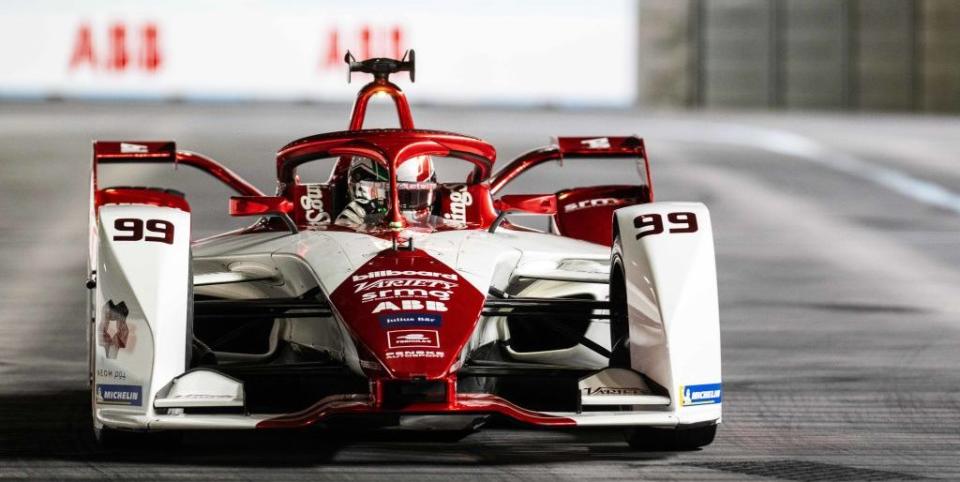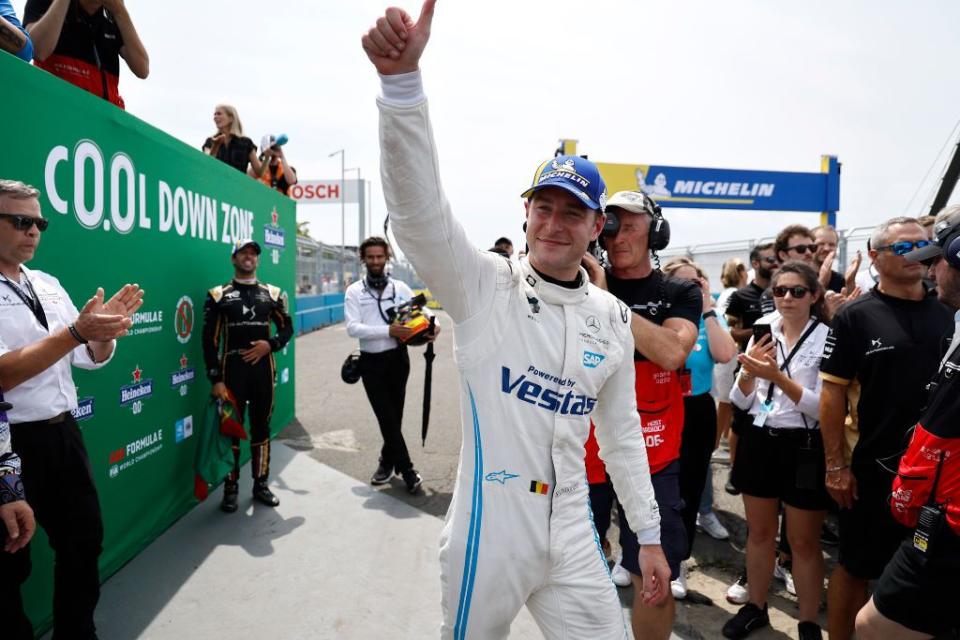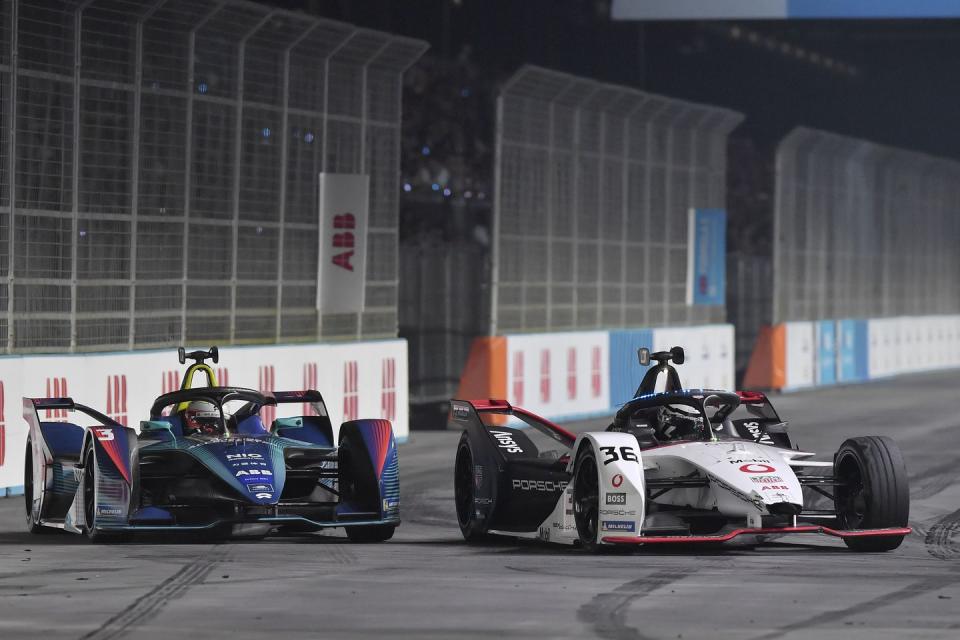Why ABB FIA Formula E Series Is in No Hurry to Extend its Electric Range in Gen 3

This weekend, Formula E wraps up both it's eighth season and its Gen 2 era.
Former McLaren F1 driver Stoffel Vandoorne has a commanding points lead over Mitch Evans and Edward Mortara heading into the doubleheader in Seoul, South Korea,
The races will be Saturday and Sunday morning (live, 2:30 a.m. ET, on CBSSN).
When the all-electric open-wheel ABB FIA Formula E World Championship hit its first street course for its racing debut in Beijing, China, in 2014, the series had a bit of a "what am I watching" appeal to it.
Racing minus the roar of typical open-wheel racers was tough for some fans to get used to. Racing with two cars—drivers switched cars during a mid-race pit stop in order to reach the 45-minute, plus-one-lap, race distance—took even more getting used to.

By the series' Gen 2 era, which began in 2018, improved the show with batteries sporting a the 45-minute range needed to complete the race without so much as a charge-and-go pit stop.
This weekend, Formula E wraps up both it's eighth season and its Gen 2 era. Former McLaren F1 driver Stoffel Vandoorne has a commanding points lead over Mitch Evans and Edward Mortara heading into the doubleheader in Seoul, South Korea,
The races will be Saturday and Sunday morning (live, 2:30 a.m. ET, on CBSSN).
Then, it's on to Gen 3. And, despite the dramatic leap in electric range with EVs in the past five years, don't expect any big leap with the Formula E fleet of race cars next year.
And, that's totally by design, says series CEO Jamie Reigle.
"We debated whether we were going to optimize for range or not (with Gen 3)," Reigle told Autoweek. "We actually like that that the races are 45 minutes. If you were starting a sport right now, you’d want to get it to within an hour window.
"Range is clearly something the manufactures are thinking about. Over time, you’ll see endurance racing on electric power. But for the time being, we like that our product fits in an hour broadcast window. The media companies like that it is a bit of a tighter experience, the fans like it. "
Which means plan on more 45-minute races in Formula E's future.
"We’ve decided to go with speed and nimble as opposed to distance," Reigle said. "In simple terms, the weight difference all comes down to the battery. If we wanted to go longer, we’d just put a bigger battery in the car. Ultimately, we took the view that speed and having a punchy race format is more important."
Even though Formula E in Gen 3 won't be pushing the envelope as much as commercial car fleets with its battery range, the series is promising quicker race cars. The current Gen 2 cars boast a top-end speed of about 175 mph. Next year, the car should be able to hit 200 mph on the longest straights.
"The Lucid Air, as a for example, they're going from L.A. to San Francisco. Right? They're gone over 500 miles on a charge," Reigle said. "So you know, but they've got a pretty big battery underneath the whole car there to do.

"In the race car, we said look, do we want for these races to move toward Formula 1—like an hour 45, two hours, for a race? I mean, we could head in that direction. Maybe we will in Gen 4, but this time, we said let's go lighter and faster.
"Our fans weren't saying 'Hey, we need to see a longer race.' So it's really an intentional choice."
The Gen 4 car, Reigle says, is not a compromise or conceding to a plateau in EV racing technology.
"No, we're not plateauing at all," he said. "I think what you're gonna see in the next 10 years is that battery technology is just going to get better and better. The electric motors are already super efficient—They're like 97, 98% efficient.
"It's all about the battery in the next five to seven years, in simple terms the size of the battery and the density of cells."
We head into the final race weekend of the season for rounds 15 and 16 of the championship!
Formula E commentator Jack Nicholls gives us the lowdown ahead of the grand finale at the 2022 Hana Bank #SeoulEPrix— ABB FIA Formula E World Championship (@FIAFormulaE) August 11, 2022

 Yahoo Autos
Yahoo Autos 